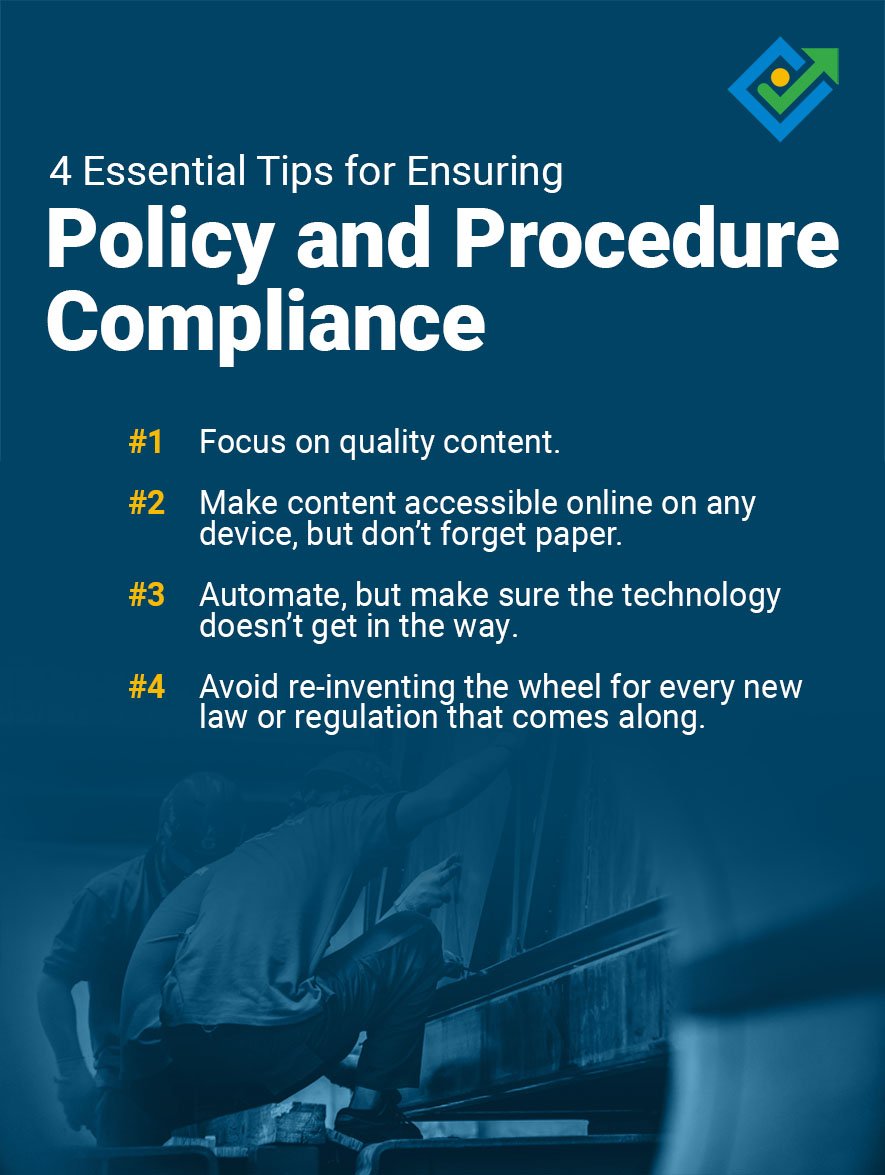
For over 30 years, Comprose has worked with organizations across all industries — commercial banks, credit unions, hospitals, labs, government agencies, and non-profits, just to name a few. Although specific regulatory and certification requirements may differ, all industries share the pain of creating and managing policies and procedures required for regulatory compliance.
If you are outside the compliance world, you may be shocked to learn that many organizations have entire departments dedicated just to compliance. In these organizations, a large chunk of budget and staff time is spent just on getting documents reviewed and approved.
No one we know has ever said, “Hooray, it’s time to review this year’s compliance policies and procedures!”
It may not be possible to transform policy and procedure compliance into something that’s on everyone’s “favorite to-do list,” but there are steps you can take that will make the job easier and less painful.
Below are proven tips that can help you tame the compliance monster and keep the regulators happy.
4 Essential Tips for Ensuring Policy and Procedure Compliance

# 1. Focus on Quality Content.
We truly believe that content quality trumps everything else. Unfortunately, content usability is something that’s difficult for many organizations to get right.
But the effort and focus on it is well worth it.
Employees who have access to clear policies and procedures perform better than those who don’t. But here’s something most people don’t think about … Better content makes your reviewers’ and approvers’ lives easier too!
Why do most managers require constant nagging and put off reviews until the last minute? Why do employees invent ways to “check off the box” on content they’ve never really read or understood? If you’ve ever had to dive into a 100-page document that’s incomprehensible and unreadable, you know what we’re talking about. Are you clear on what you’re signing off on?
Better content makes auditors happy and bolsters their confidence in you. Audits are easier and less costly. Even in a world with hundreds of document management products, slick-looking websites, and search engines, all this technology doesn’t do any good if people don’t understand the content itself or if it takes forever to get through it.
#2. Make content accessible online on any device, but don’t forget paper.
The modern way to deliver policy and procedure content is through an engaging online experience, but don’t forget that some people may need or even prefer paper. It’s important to keep your audience in mind. The system you use should enable you to easily deliver content in the way your audience wants it — without all the pesky reformatting.
#3. Automate, but make sure the technology doesn’t get in the way.
Utilizing a single application that handles all phases of the policy and procedure life cycle is far superior to doing these tasks manually or cobbling together multiple systems.
Automation features such as review/approval workflows can significantly save everyone time and frustration, but make sure the technology doesn’t get in the way. Tools that require extensive setup time and complex procedures to operate often die on the vine because they don’t get used. We’ve seen companies waste thousands and millions of dollars this way.
Again, think about your audience. Is a high-level executive going to be scared off by tons of features thrown at them?
#4. Avoid re-inventing the wheel for every new law or regulation that comes along.
We see this all the time. Over time, policy and procedure content has been cobbled together and evolved in a haphazard manner.
So, when a new law or regulation comes along, the company reinvents the wheel and starts over. Or, one area of the company has developed content that could be re-purposed, but no one in the other departments knows about it.
You get the picture.
Everyone does their own thing. Operating this way is wasteful, error-prone, and a surefire way to fail an audit.
The best practice is to utilize a single system and create an information architecture that is modular and easy to change. This is best done early, at the beginning. Think of your policies and procedures as a living, breathing system, not the old-style static documents or a one-off project. With software like Zavanta, you can cross-link your policies and procedures with your regulations.
If you practice this approach, your policy and procedure content can simply be tweaked and changed as the regulatory environment changes.
Zavanta Streamlines Policy and Procedure Compliance
Real-life examples speak for themselves. Using Zavanta:
- One manufacturer was able to avoid (2) multi-million dollar lawsuits by proving they had necessary safety policies and procedures in place
- Another client was able to become ISO registered in half the time it normally takes.
- A community bank was able to overcome numerous citations and create a policy and procedure system that its auditors praise
- An e-commerce services provider said their auditors commented that their P&P system “Was the best implementation of Policy and Procedure documentation they had seen anywhere.”
Zavanta is specifically designed to address the challenges discussed above by seamlessly integrating planning, structured authoring, content management, and the deployment of policies and procedures into a single, easy-to-use tool.
Additional Resources




